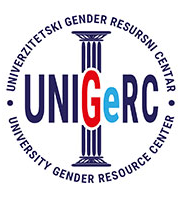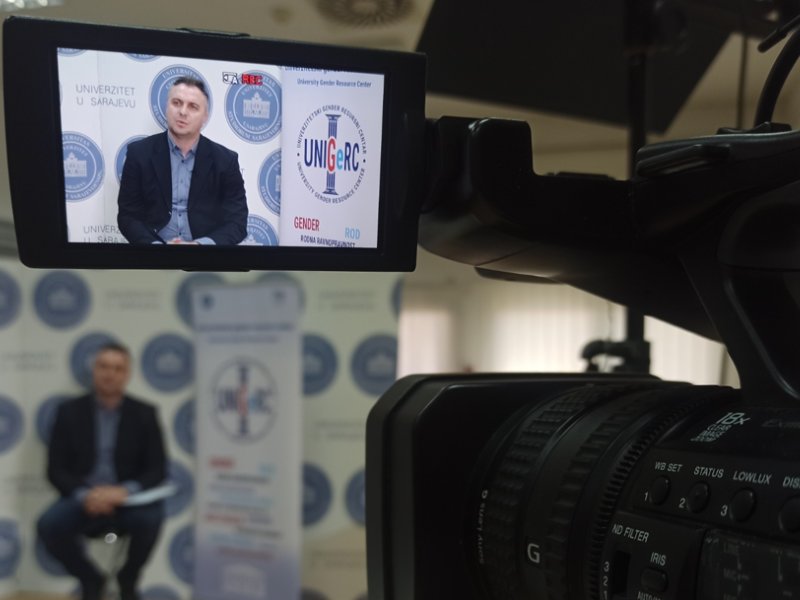As part of the UNIGEM project, five new videos are created in cooperation with the legal expert Dr Nermin Šehović, LLM.
The titles of new videos are: Current situation regarding gender-based violence in BiH, Evidence in cases of violence or femicide, Femicide in BiH and criminal procedure framework, How to recognize femicide and Procedure for reporting violence.
These videos aim to inform and educate the general public about the topics of violence, femicide and prevention.
- In the video titled ‘Current situation regarding gender-based violence in Bosnia and Herzegovina’, Dr Šehović points out that ‘the fight against violence deserves an adequate response from all authorities in Bosnia and Herzegovina. Namely, considering an alarming increase in number of cases of domestic violence, a legal solution is needed to reduce the number of these cases. Also, it is necessary to insist on the uncompromising protection of victims of violence and on their education, i.e. victims have to know what to do from the first appearance of violence, i.e. from a threat, even one that seems harmless, and can be sent via social networks, up to the very situations when they are exposed to direct physical violence.
In connection with the most serious forms of violence, such as femicide, it is necessary to revise the current databases and to profile the perpetrators additionally. Also, the provisions related to the acquisition, possession and carrying of weapons and ammunition have to be revised, harmonized and uniformly regulated in Bosnia and Herzegovina. If the measures are tightened, protocols related to the acquisition and carrying of weapons and ammunition, which citizens are allowed to possess, more precisely defined, and if the number of illegal weapons is reduced, at the same time the number of cases of femicide committed with these weapons would also be reduced.
Each person should make his/her contribution to fight against gender-based violence by reporting to the police what knows about situations endangering the safety of his/her male and female colleague(s) or acquaintance(s), neighbour(s) or perhaps someone’s mother, sister, etc. In fact, just to do what we as human beings should do, because otherwise – by keeping quiet – we become accomplices to violence.’
Video available at https://www.youtube.com/watch?v=GI-MnExatxs
- In the video titled ‘Evidence in cases of violence or femicide’, Dr Šehović emphasizes that ‘evidence represents all means on the basis of which the court, given its free assessment of the evidence, will make an adequate judicial decision in cases where violence has occurred, including cases of femicide. The first and basic action in cases of violence is the hearing of witnesses and victims of violence. The investigation serves to collect traces and evidence on the spot, i.e. it is the initial action that collects traces and evidence that will later be further examined. To see what kinds of expert examinations can be undertaken, please refer to the video.
Video available at https://www.youtube.com/watch?v=JVLSj_pA5CM&t=42s
- The video ‘Femicide in Bosnia and Herzegovina and the criminal procedure framework’ begins with the fact that ‘there is an increasing number of criminal acts of femicide in Bosnia and Herzegovina’ and then points the paradox that ‘femicide with all its specificities has not been defined in substantive criminal legislation in Bosnia and Herzegovina. Considering the social danger that femicide represents, it is necessary to define it through amendments to the current Criminal Code – or to amend its certain paragraphs – i.e. to prescribe it as a separate type of criminal act, or as an aggravating circumstance.’
Video available at https://www.youtube.com/watch?v=Iel9pGIxWBA
- Regarding recognizing femicide, the video under the title ‘How to recognize femicide’ points out that ‘after the criminal act of murder, if the perpetrator is unknown, the investigators’ primary task is to determine a motive for this criminal act. In a large number of cases of murders, when the victims are women, through determining the motive itself, we arrive to the phenomenon of femicide. Namely, it often happens the perpetrator of the crime, driven by personal passions, motives, or other motives, believed that he somehow had the right to harm the victim.’
In regard to recognition of femicide, Dr Šehović also adds that ‘it is never ‘ad hoc’, suddenly, unexpectedly done.’ Other forms of violence precede it, such as abusing, stalking, harassing, intimidating, physical harming a person, and later it results in the most serious forms of murder. Police authorities, actually all services involved in providing protection of basic human rights, should recognize from the first moment if a motive has features of femicide.’
In this video, you may also see the answers to the questions: Is the level of education, status, reputation or occupation of the perpetrators of the most serious crimes important?, Can police officers be the perpetrators in cases of murders with elements of femicide?, and When in criminal proceedings is a perpetrator’s mental state determined?
Video available at https://www.youtube.com/watch?v=g_oyBGshr3o
- The video titled ‘Procedure for reporting violence’ gives answers about who can file a report. As Dr Šehović explains ‘reports regarding domestic violence can be made by the victims themselves, passers-by, neighbours, and/or friends. But it is important to report these incidents of violence. In fact, to report it is the most important thing to do, i.e. the most important is that the victimized person submits an adequate report to the police officers, who are at disposal 24 hours a day to all citizens. The report regarding occurrence of violence can be submitted by phone, orally or in writing, publicly, anonymously, under a pseudonym. It is only important to report it in a timely manner, because the timely submission initiates urgent actions of the police authorities, i.e. urgent notifications of the prosecutor who will supervise the work of authorized officials in order to document the specific criminal offense.’ To see how the process goes further after a victim submits the report, please, refer to the video.
Video available at https://www.youtube.com/watch?v=f5GfAMBCdcA



